One of the things I wanted to do in Thailand was to visit an ethical elephant sanctuary. This turned out to be really simple, but it left a few questions lingering in my mind. Is there such a thing as an ethical sanctuary in Thailand?
Thailand doesn’t always treat its Elephants well. They are intelligent animals that don’t take to living in captivity. This unfortunately leads to training Elephants using the stick (or rather, hook) instead of the carrot. Elephant riding, in particular, is a cruel practice. It does damage to the Elephant’s spine that never goes away. Unfortunately many tourists are unaware of this (or they don’t care) and will pay to ride them anyway.
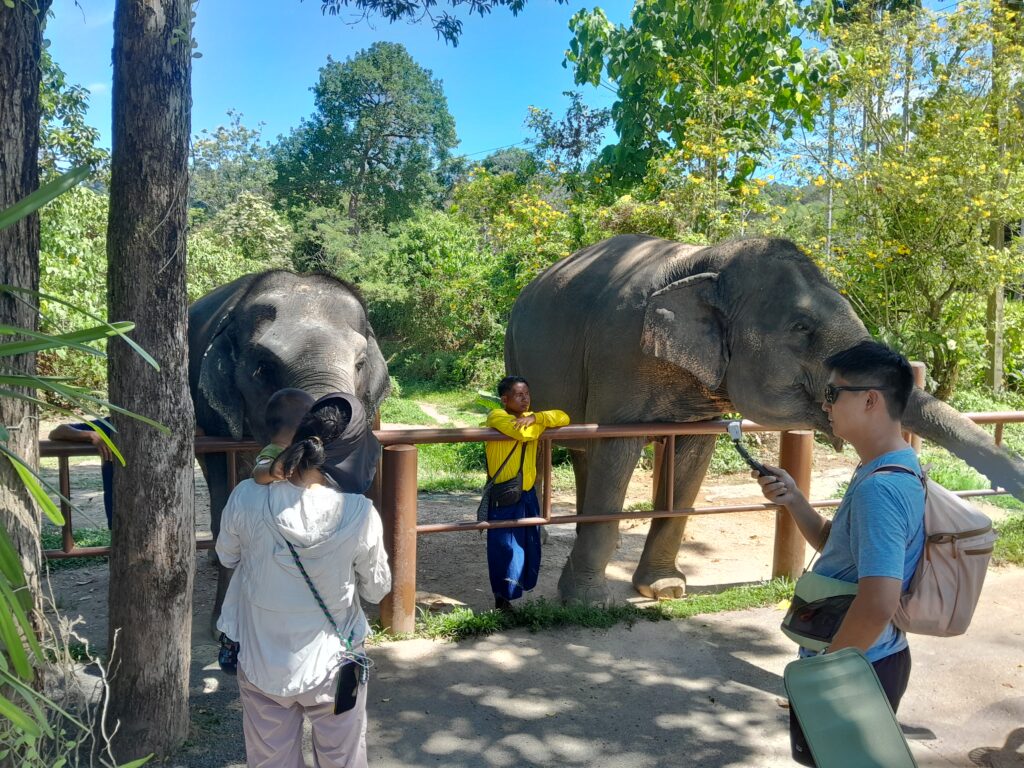
Getting a chance to see the world’s largest land animal is something I wanted to do, but I had to keep in mind the abuse. I’d rather not see an elephant than know it was being hurt for my entertainment. There are ethical sanctuaries in Thailand. It can be hard to figure out which ones, but the thing you need to look for are rescue sanctuaries that don’t let you ride or bathe the elephants.
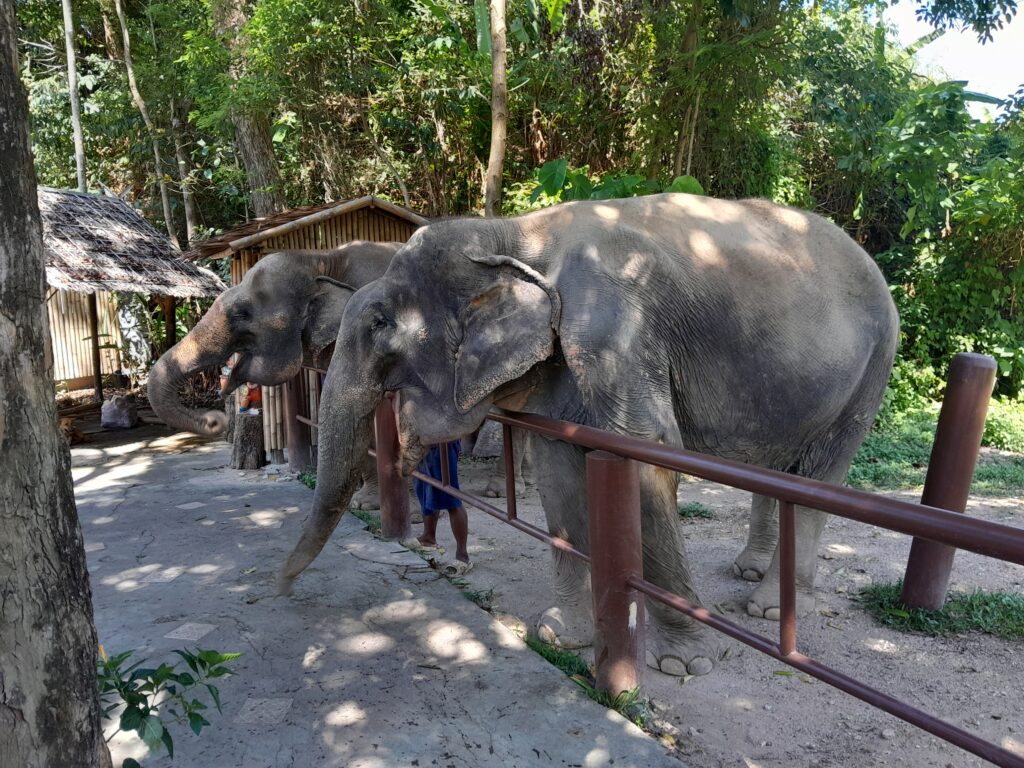
We found the Bukit Elephant Sanctuary in Phuket. After reviewing their website and reviews of the place, it seemed like a place that treats their rescue elephants well. We booked a tour and they picked us up from our hotel the next morning. In total there were probably around a dozen of us on the tour.
We waited in the lobby for a short while before they took us out to feed the elephants. They instructed us on how to do this, namely that they are strong so make sure they don’t grab you hand, don’t tease them, and keep an eye on your kids.
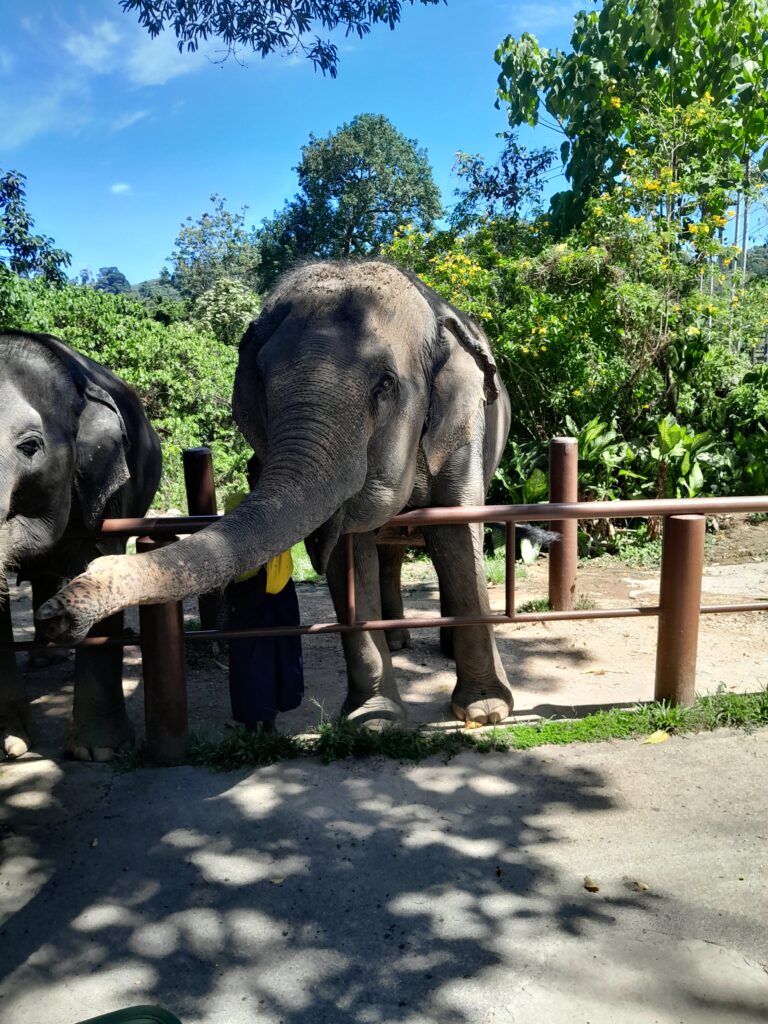
We were each given a basket of bananas and the elephants were led up to us. They would hold out their trunks and grab at the food we gave them, putting it straight into their mouths. I noticed one of the elephants had a huge scar on their trunk, badly deforming it. A reminder of what came before and that these are rescue elephants.
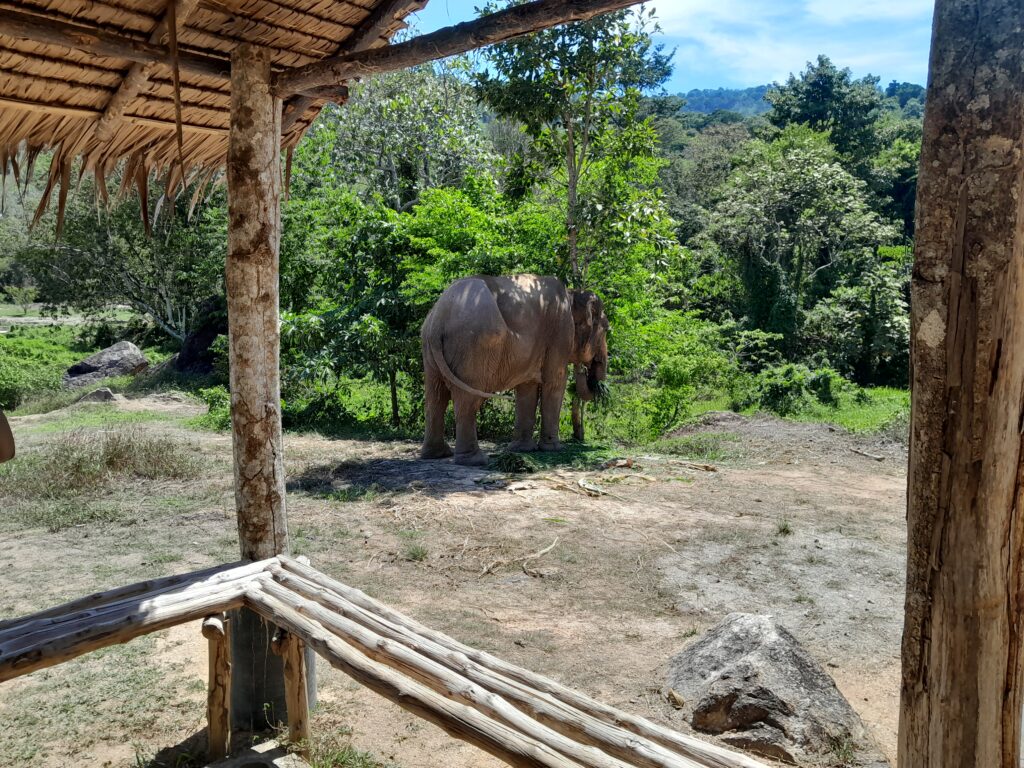
After feeding the elephants were led back outside and we would walk down to meet them one by one. Their minders would take each of them to a station where we could interact with them.
When an elephant is rescued, they are assigned a human companion. They form a bond with the elephant, get to know them and are always the ones to take care of their specific elephants. When we are given a chance to take a picture with an elephant, they are there to both reassure the elephant, and to observe them. They keep us, and more importantly, the elephant safe.
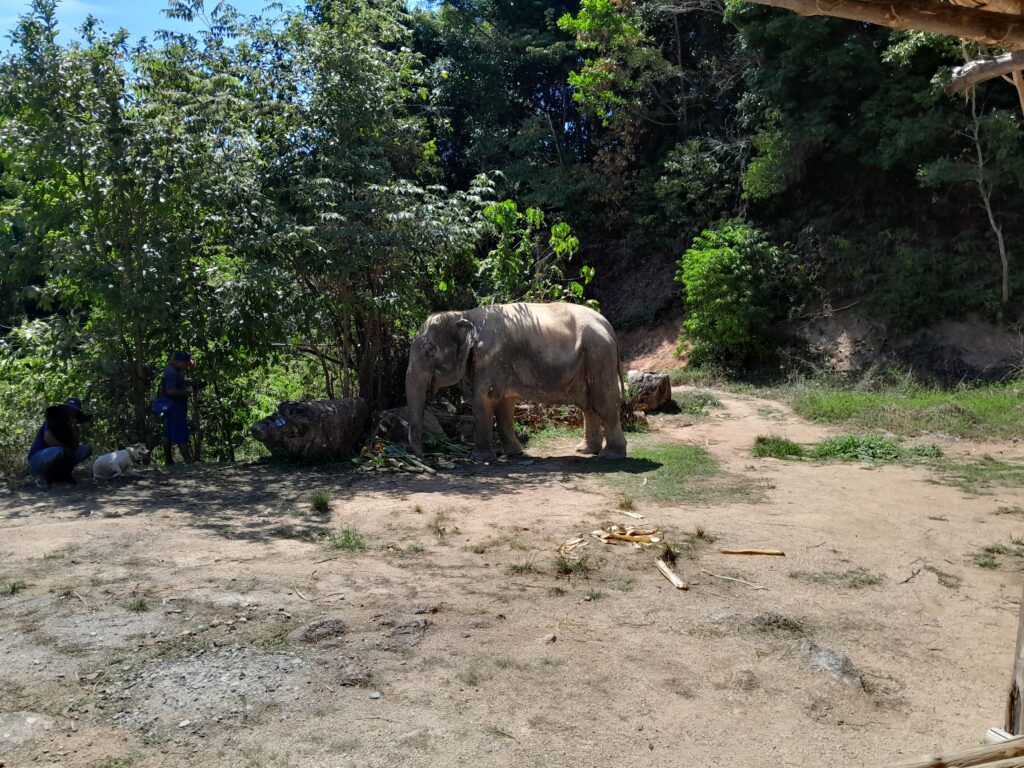
When we are introduced to each elephant our guide would explain their personality and how best to approach them. Some we could approach from the side. Others we couldn’t approach at all. They had been abused too much, so could easily become aggressive if something scared them.
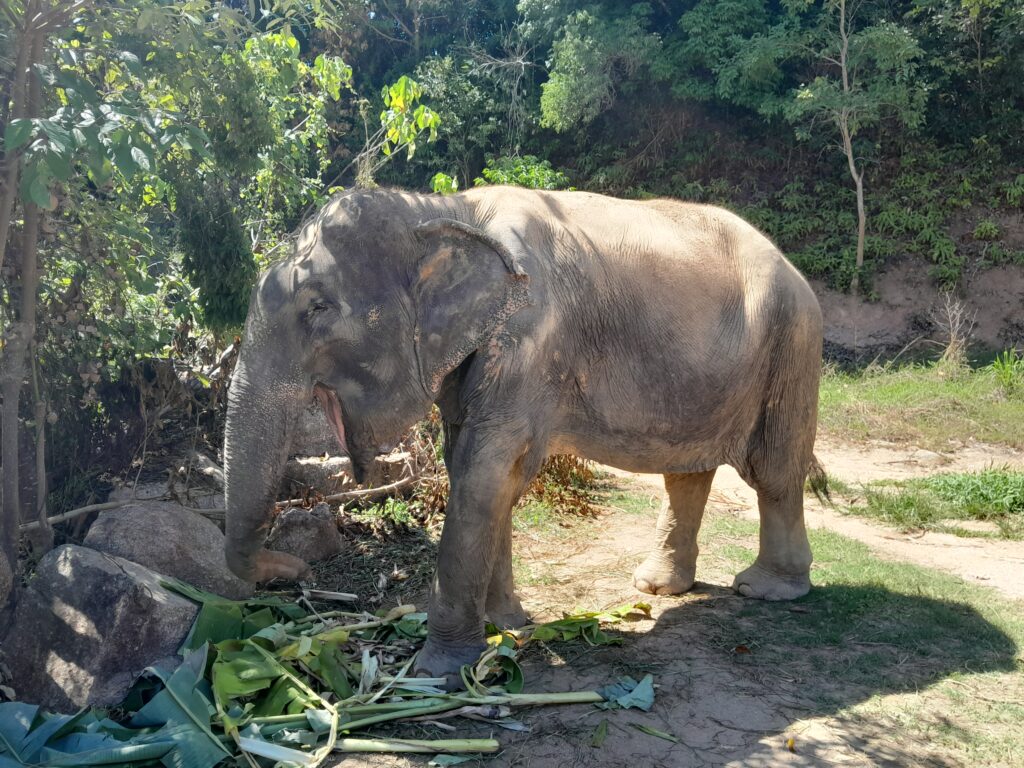
Each elephant had a story. One would constantly raise it’s foreleg as we came near. She had once been a circus elephant, a dancer. She had been trained that the way to gain approval was to dance, so she would raise her leg to show she was ready to dance.
We had umbrellas with us, but we were told to put them down before we approached an elephant. This is because they would remind them of the hooks that would be used to keep them in line. All the elephants had scars where these hooks had cut into them. The elephant with the huge scar on her trunk was a result of a particularly aggressive owner.
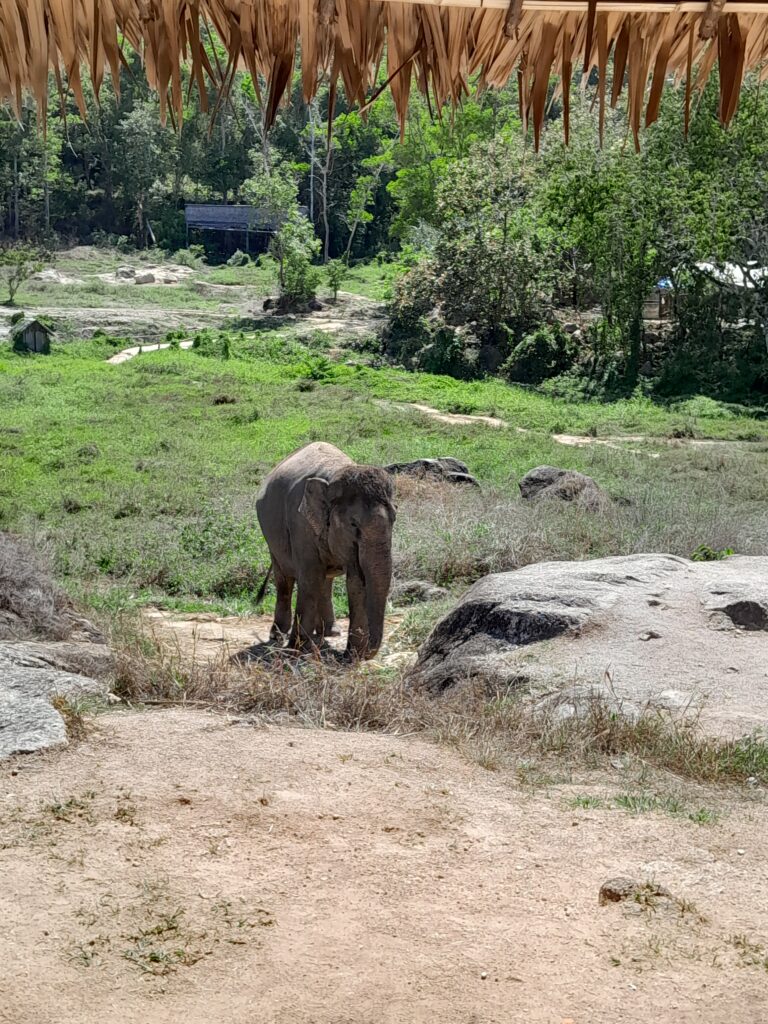
During the tour they explained Thai law to us. If you buy an elephant you have to give it a job. This is because elephants are expensive to feed, and you need to prove you can look after it. Thai people have great respect for these amazing creatures and the law is designed to protect them. Unfortunately the end result is that they end up being abused so they can entertain humans.
When they rescue the elephants they have to buy them. I guess opening the sanctuary to tourists is their way of giving them a job. At least here they are treated with respect and allowed to wander free. In fact, the sanctuary has no barriers. Elephants do occasionally wander outside of the bounds, but they will either come back or be guided back by their companions.
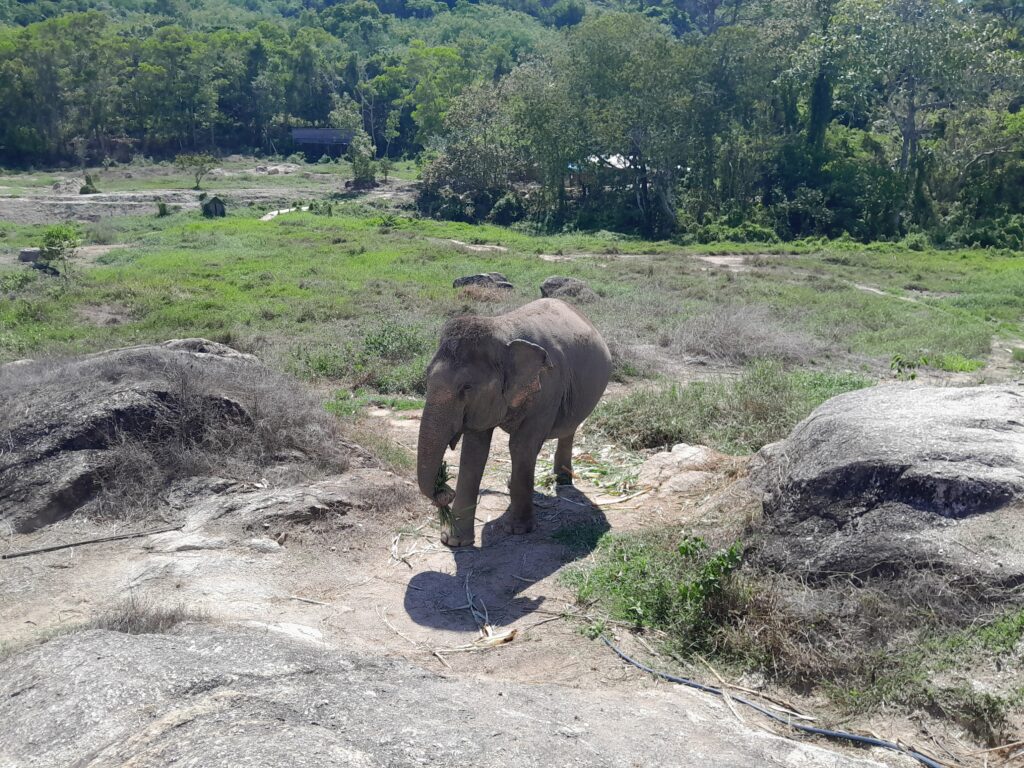
One of the last things we learned about the elephants were their ages. The youngest was 40. I couldn’t help but think about the fact they must have endured decades of abuse before they ended up here.
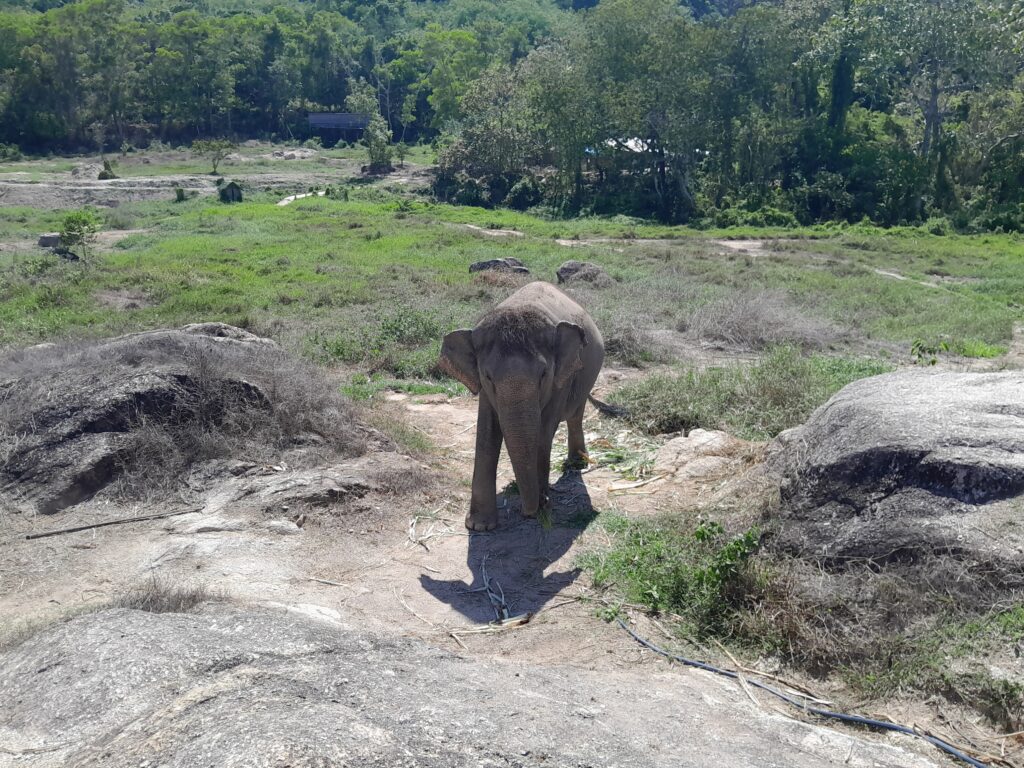
At the end of the day we got to cook Tom Kha, a traditional Thai dish, and got to watch the elephants wander freely. It was nice to see them doing their own thing and not posing for pictures.
As we left I got to thinking if this was still morally right. The elephants have been through a system that ends up here. In a way it is a retirement home for Thai elephants. But it is a rescue. If they didn’t buy them, someone else would. And that someone else may not be too kind to them. Or worse, no one buys them and they end up being abandoned.
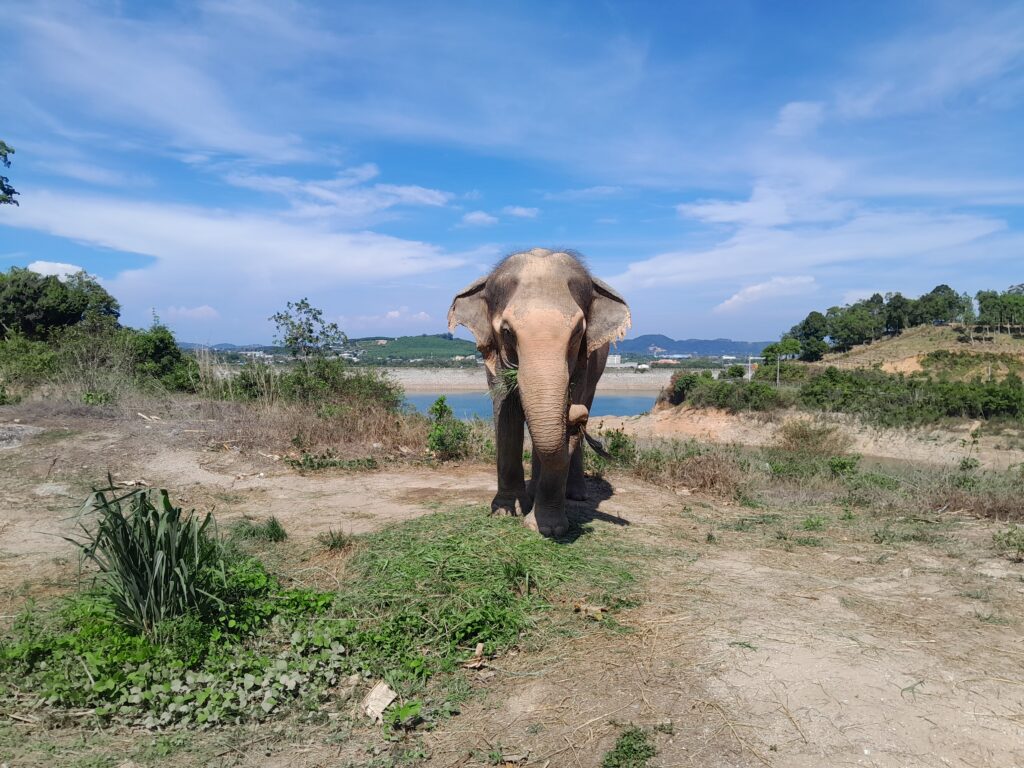
They say they rescued more elephants during COVID. Elephants are part of the tourist industry and without tourists many elephants can’t work. Their owners couldn’t afford to keep them, so had to sell them.
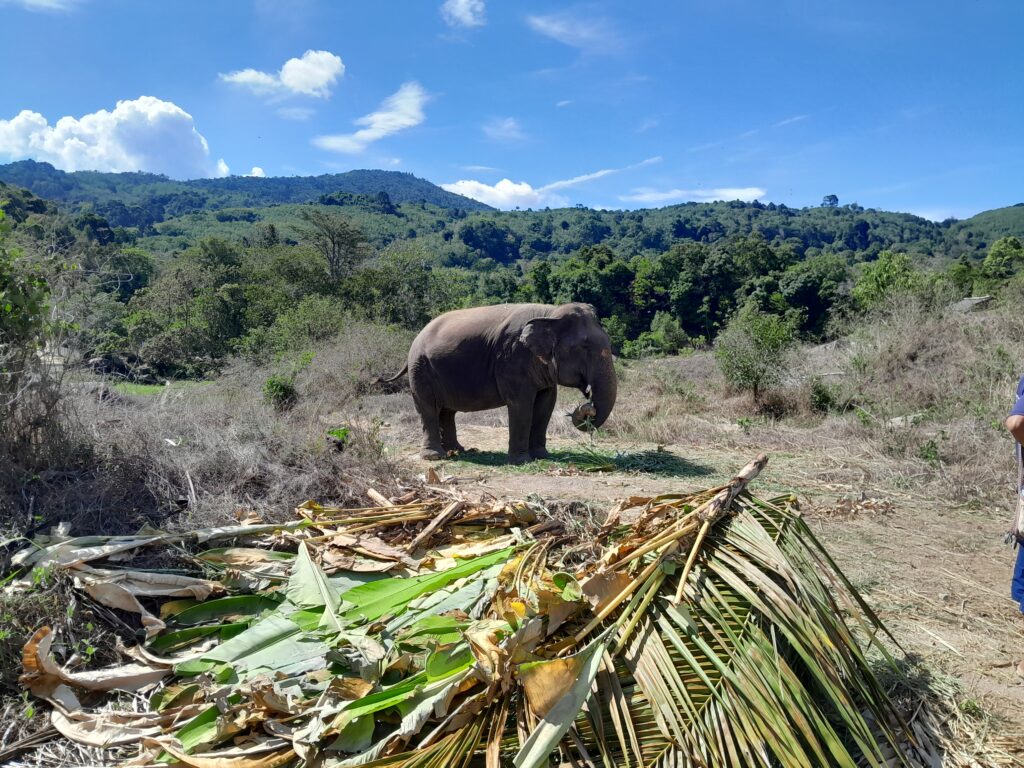
The law and tourism around elephants in Thailand needs to change. But rescuing them and giving them homes where they can roam free is a good first step. If these sanctuaries didn’t exist, we wouldn’t even have that. But until tourists start understanding and caring about elephants, there will always be a market for elephant cruelty.




